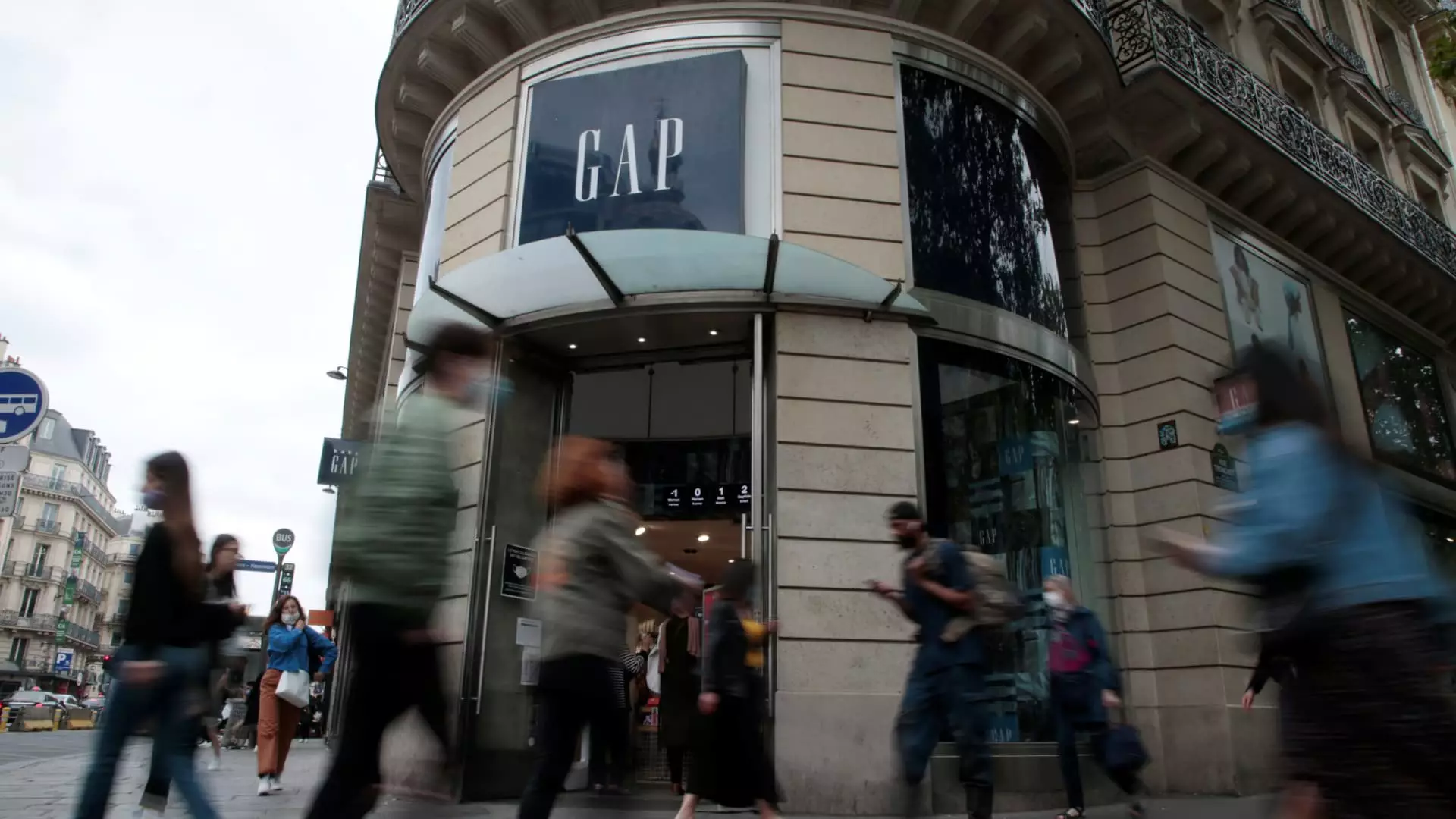The recent fiscal first-quarter earnings report from Gap Inc. revealed a troubling forecast for the retailer, driven largely by new tariffs proposed on imports from China and other countries. The company disclosed that these tariffs could siphon off anywhere between $250 million to $300 million if mitigation strategies fail to materialize. This stark reality resulted in a sharp decline in share prices, plummeting over 15% in after-hours trading—a significant blow to investor confidence.
While Gap maintains a cautious optimism, the immediate financial implications are daunting. The projected cost impact, between $100 million to $150 million, could manifest heavily on the balance sheets in the latter half of the year, creating an atmosphere of uncertainty. The CEO, Richard Dickson, spoke to investors about their plans to navigate these challenges, emphasizing an ongoing effort to diversify their supply chain and to place a heavier reliance on American cotton. This pivot underscores a critical question: can Gap genuinely offset the financial strain imposed by tariffs while simultaneously reversing the company’s fortunes in a competitive retail environment?
The Internal and External Struggles
Beyond the external pressures of tariffs, Gap’s own fiscal results unveil a mixed bag. While the company’s revenues are up, largely beating Wall Street’s expectations, some indicators suggest underlying weaknesses. Comparable sales growth of only 2% for the quarter is lackluster when measured against fierce competition in the fast-paced retail market. Furthermore, the company’s gross margin forecast is less optimistic than investors had hoped, reflecting the cost of previous fiscal concessions rather than a tangible improvement in its profit-generating ability.
The disparity is potentially a harbinger of deeper issues that Gap must address. The retail landscape is shifting dramatically, and legacy brands like Gap must compete on multiple fronts—quality, innovation, and brand identity are crucial for survival. Despite Dickson’s assertions that strong brands will prevail, it is hard to ignore that reliance on past successes may not be sufficient to ensure future growth.
Brand Performance: A Mixed Portrait
Diving deeper into the performance of Gap’s various brands reveals a divide; while Old Navy triumphs with a robust 3% increase in sales, Banana Republic and Athleta are struggling. Old Navy, Gap’s flagship brand, experienced a surge attributed to strategic marketing initiatives and a refreshing product lineup. This poses a question about whether Old Navy’s strength can insulate the brand family against broader corporate challenges.
In stark contrast, Banana Republic’s continued decline in sales emphasizes a critical need for reassessment. The brand, once a staple of American retail, is struggling to connect with consumers and regain their trust. Dickson’s optimistic view on the brand’s partnerships, like the collaboration with HBO’s “The White Lotus,” feels like grasping at straws rather than a robust strategy for recovery. Similarly, Athleta’s struggles with cottoning appeal to core customers and lack of compelling products suggest a misalignment with consumer expectations.
The Broader Implications of Tariff Policies
The impacts of tariffs are not isolated to Gap; they are indicative of a larger trend wreaking havoc on retailers across the board. The strategic changes necessary to adapt to these new realities could reverberate through the economy, affecting employment, consumer spending, and production patterns. The potential for retaliatory tariffs—especially from significant trading partners like Vietnam—may complicate matters even further and alter Gap’s sourcing strategies dramatically.
This situation forces us to examine the broader economic implications of trade policies. Tariffs, often meant to protect domestic industries, can place undue pressure on companies that are already navigating the complexities of modern retail. They often result in higher prices for consumers, which can diminish spending power and exacerbate economic inequalities.
A Question of Resilience
Ultimately, Gap’s path forward hinges on its ability to exhibit resilience in the face of adversity. The company appears committed to diversifying its supply chains and reducing exposure to problematic markets, but the effectiveness of these strategies remains to be seen. The retail environment is unforgiving, and the stakes are high; if Gap cannot adapt swiftly and effectively, it risks losing not only market share but ultimately its position as a cultural touchstone in American retail.
In a rapidly evolving landscape, brands must do more than simply survive; they must thrive. Gap’s future hangs in the balance, teetering between the optimism of potential recovery and the specter of ongoing financial frailty. In true liberal fashion, we must foster hope in innovation and resilience while critically evaluating the ramifications of broader trade policies that impact not just a single corporation, but the very fabric of our global economy.

